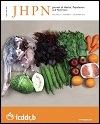Estimation of Gestational Age, Using Neonatal Anthropometry: A Cross-sectional Study in India
DOI:
https://doi.org/10.3329/jhpn.v31i4.20051Keywords:
Anthropometry, Equation, Gestational age, New Ballard Score, Newborn, IndiaAbstract
Prematurity is a significant contributor to neonatal mortality in India. Conventionally, assessment of gestational age of newborns is based on New Ballard Technique, for which a paediatric specialist is needed. Anthropometry of the newborn, especially birthweight, has been used in the past to predict the gestational age of the neonate in peripheral health facilities where a trained paediatrician is often not available. We aimed to determine if neonatal anthropometric parameters, viz. birthweight, crown heel-length, head-circumference, mid-upper arm-circumference, lower segment-length, foot-length, umbilical nipple distance, calf-circumference, intermammary distance, and hand-length, can reliably predict the gestational age. The study also aimed to derive an equation for the same. We also assessed if these neonatal anthropometric parameters had a better prediction of gestational age when used in combination compared to individual parameters. We evaluated 1,000 newborns in a cross-sectional study conducted in Guru Teg Bahadur Hospital in Delhi. Detailed anthropometric estimation of the neonates was done within 48 hours after birth, using standard techniques. Gestational age was estimated using New Ballard Scoring. Out of 1,250 consecutive neonates, 1,000 were included in the study. Of them, 800 randomly-selected newborns were used in devising the model, and the remaining 200 newborns were used in validating the final model. Quadratic regression analysis using stepwise selection was used in building the predictive model. Birthweight (R=0.72), head-circumference (R=0.60), and mid-upper arm-circumference (R=0.67) were found highly correlated with gestation. The final equation to assess gestational age was as follows: Gestational age (weeks)=5.437×W0.781×W2+2.815×HC0.041×HC2+0.285×MUAC22.745 where W=Weight, HC=Head-circumference and MUAC=Mid-upper arm-circumference; Adjusted R=0.76. On validation, the predictability of this equation is 46% (±1 week), 75.5% (+2 weeks), and 91.5% (+3 weeks). This mathematical model may be used in identifying preterm neonates.
DOI: http://dx.doi.org/10.3329/jhpn.v31i4.20051
J HEALTH POPUL NUTR 2013 Dec; 31(4): 523-530
Downloads
484
348

